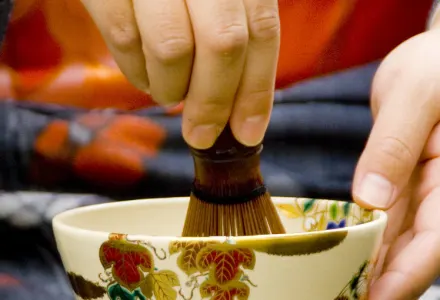
The tea room has an ambience that most day spas can only dream of.
I settle on the tatami mats with my legs tucked beneath me, trying to look demure. The rice paper screens are open to the courtyard, and I see a cluster of young bamboo being rifled by the breeze. Although I am in the heart of Japan's ancient Kyoto city, the only interruption to the blanket of serenity is the song of wind chimes.
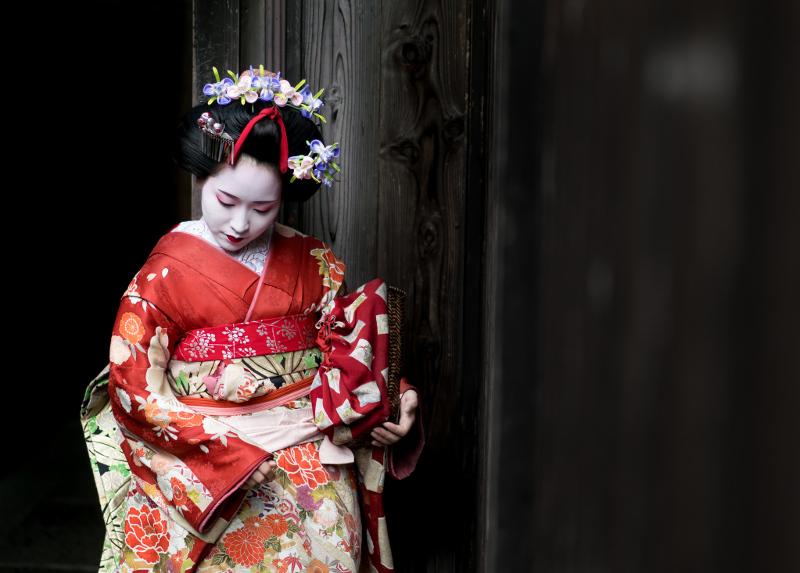
Maiko can be distinguished from geisha by showier hair ornaments, brighter kimono and red eye makeup
I feel underdressed in my shorts and t-shirt, especially compared to the maiko settled opposite me. Mikako san's hair is a bejewelled masterpiece; her painted face is surely the envy of china dolls all over the world. She is in her fifth and final year of training to become a fully fledged geiko, the correct terminology for geisha from Kyoto.
I'd wondered why our sado (Japanese tea ceremony) was scheduled to take 45 minutes and I discovered that it's not a process of practicality. It's a dance comprised of meaningful motions, ancient props and tradition born of a time when samurai drank tea to proclaim their status.
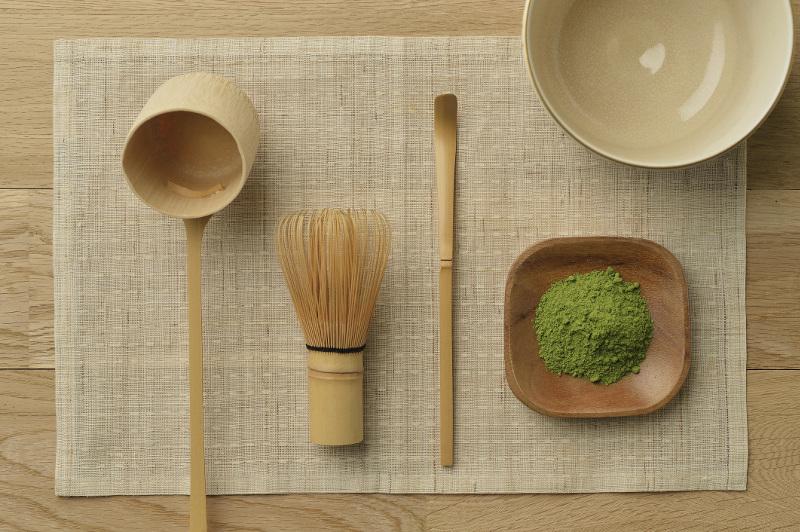
From left to right - hishaku, chasen, chashaku, and chawan above a plate of match powder
Mikako san has already presented us with plates of picturesque sweets (wagashi), and is now busy preparing her tea utensils. There's the tiny chashaku, used to scoop a pedantically measured amount of matcha - you can't risk getting the proportions wrong. I recognise the long-handled hishaku ladle and the chasen, or tea whisk, and there's a gleaming lacquered canister (natsume) that I immediately covet. I'm also eyeing off a group of stunning pottery bowls that I hope our tea will be served in.
Enjoying a tea ceremony with a maiko or geiko is an included APT Signature Experience on an 11-night Best of Japan Tour. To find out about our current Fly Free* offer, contact your local Travel Associates advisor today!
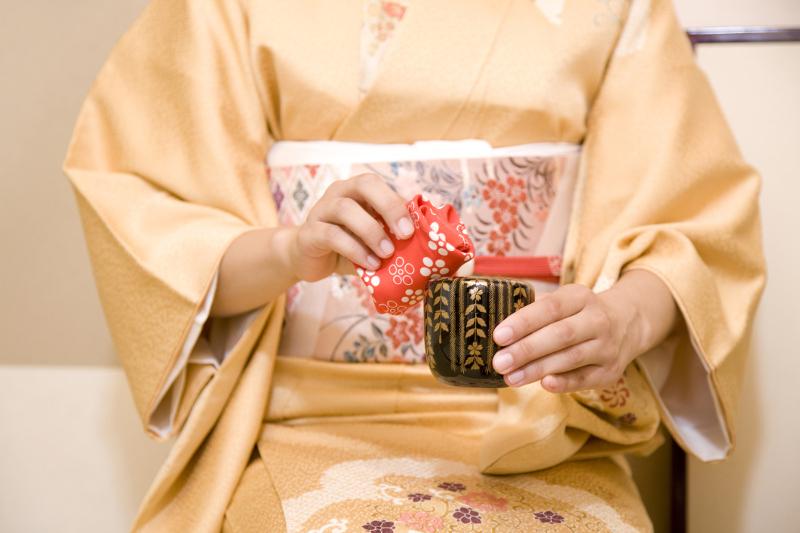
The fukasa cloth is ceremoniously folded and unfolded to purify each separate tea utensil
To purify her implements, Mikako folds a silk fukasa cloth in a prescribed order and gently wipes each item. When everything is resting back on the lacquered tray she offers us a deep bow, and I understand the silent signal. We are ready to make tea.
As she scoops tea from the natsume and ladles hot water from the portable summertime furo brazier, Mikako explains the significance of each movement. But I know I will never remember the correct use of right or left hand, or exactly where to place each utensil in relation to the others. Besides, Mikako has urged us to finish our wagashi prior to tea time, and I am busy enjoying the odd textures and flavours of my tasty morsel.
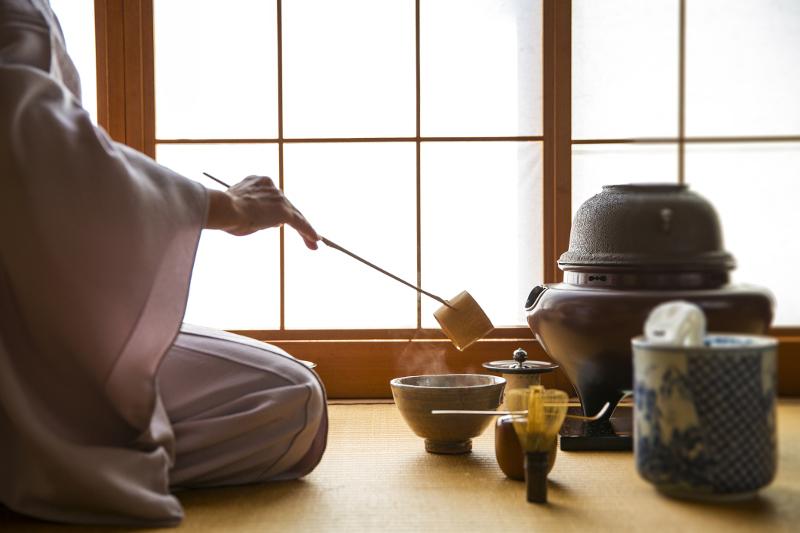
Traditional tea making equipment is known collectively as dōgu
I watch in fascination as the beautiful fluttering of her hands eventually produces a bowl of steaming, frothy matcha. Mikako respectfully turns the chawan bowl so the decorated side faces me and passes it over with both hands, bowing her head.
Traditionally a communal chawan would be passed first to the guest with the highest status, but our modern and western friendly ceremony has provided bowls for everyone. There's a subtle dip on the rim of the chawan that invites me to take my first sip. The slightly bitter matcha is a startling contrast to the sweet wagashi, which, Mikako assures me, is the point of eating dessert first.

Wagashi come in many shapes and flavours, but sweet bean paste is a common ingredient
Throughout the ritual, Mikako regales us with information. I thought green tea powder was less nutritious than leaves, but I was wrong. Juicy new shoots are dried and powdered early, to preserve the higher nutrition density of youth. We learn of 400-year-old chawan that are revered for their wabi sabi - the beauty of imperfection and impermanence.
Mikako also draws our attention to a hanging scroll, and explains that the characters spell out a poem of welcome and peace, chosen to set the mood for today's ceremony.
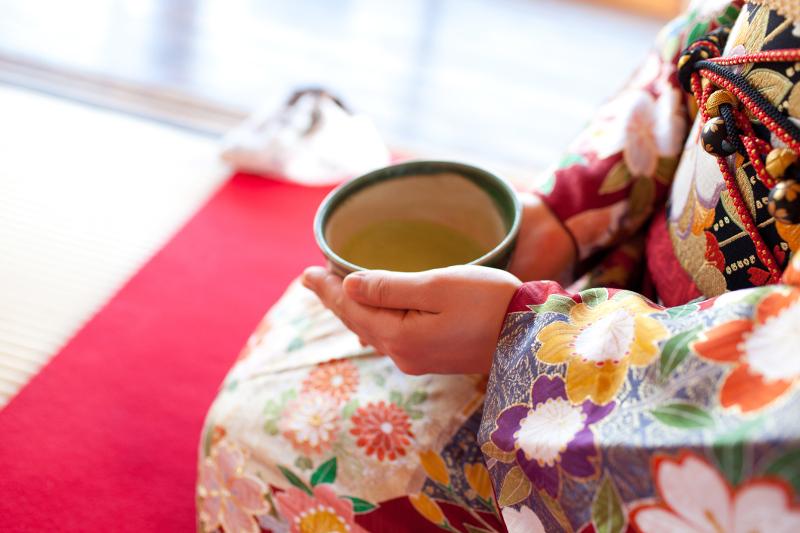
The chawan should be admired and discussed throughout the tea ceremony
The ceremony concludes, but I'm reluctant to move and disrupt my feeling of deep peace. Only the thought of shopping for my own natsume and chawan in the cobbled streets of Gion goads me to my feet. I set out on a mission to somehow bring the tranquillity of sado home with me from Kyoto.
*Conditions apply

one of a kind holiday?
Takes 3 minutes
